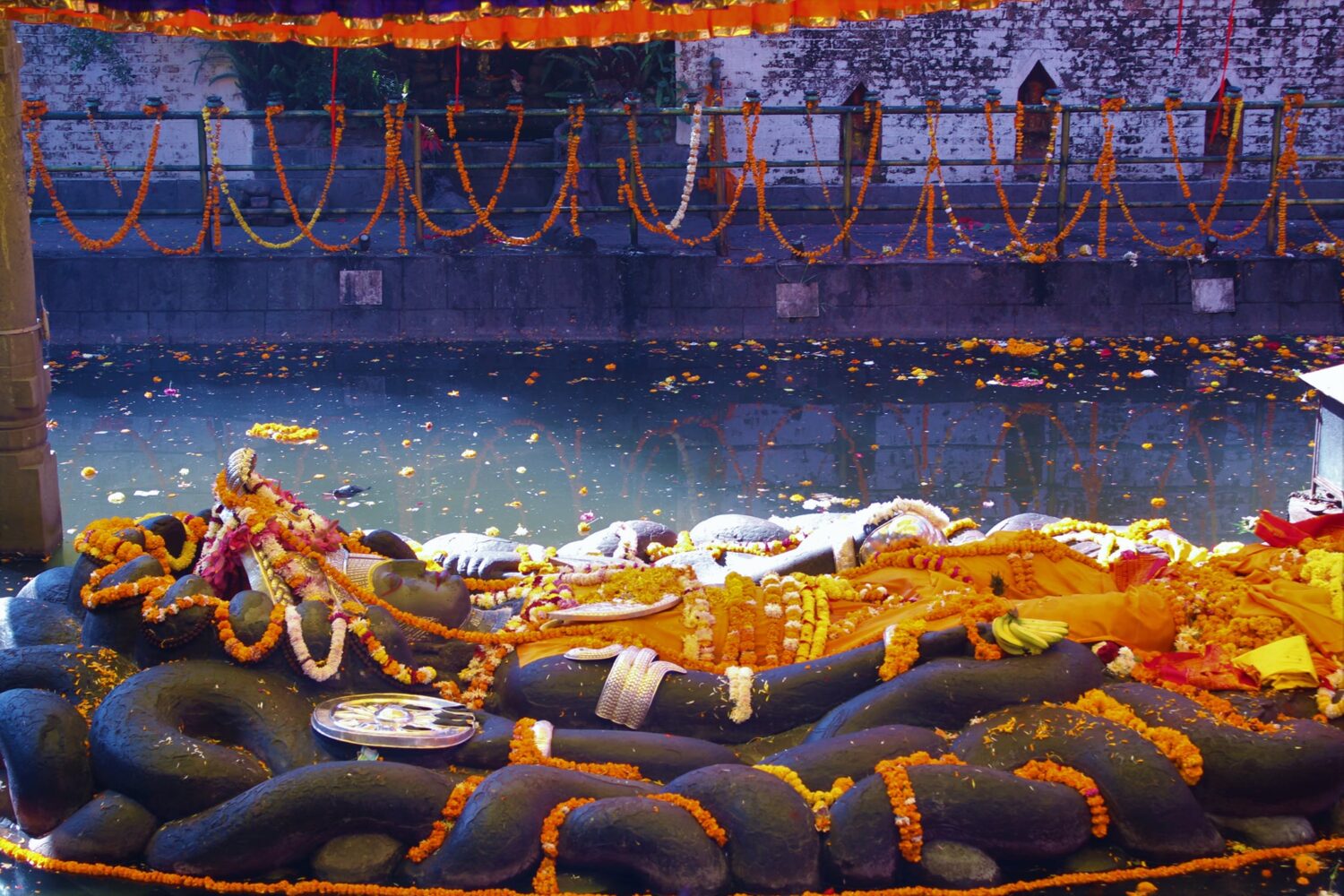Nestled in the serene outskirts of Kathmandu Valley, the Budhanilkantha Temple stands as a testament to Nepal’s rich cultural heritage and spiritual significance. This ancient Hindu temple, dedicated to Lord Vishnu, attracts visitors from around the globe seeking both spiritual enlightenment and architectural marvel.
Budhanilkantha Temple, also known as the Narayan Temple, dates back to the 5th century during the Lichhavi period. Its primary deity is a massive black stone idol of Lord Vishnu reclining on the coils of the cosmic serpent Shesha, floating peacefully in the sacred pool. This awe-inspiring representation of Vishnu, known locally as “Sleeping Vishnu,” is revered by Hindus and historians alike for its craftsmanship and spiritual symbolism.
The temple’s architecture blends traditional Nepali craftsmanship with intricate stone carvings and religious motifs. The idol itself, carved from a single block of black stone, measures approximately 5 meters in length, making it one of the largest stone statues of Vishnu in Nepal. The serene pond surrounding the deity adds to the temple’s peaceful ambiance, drawing visitors into a realm of spiritual tranquility amidst the bustling Kathmandu Valley.
For tourists and pilgrims alike, visiting Budhanilkantha Temple offers a glimpse into Nepal’s deep-rooted spiritual traditions and architectural prowess. The serene atmosphere and historical significance make it a must-visit destination for cultural enthusiasts and spiritual seekers. Visitors can explore the temple grounds, participate in religious ceremonies, and witness the daily rituals performed by devoted priests.
Beyond its religious importance, Budhanilkantha Temple plays a crucial role in local community life and cultural heritage. Festivals such as Haribodhini Ekadashi and Dashain attract large crowds, showcasing vibrant celebrations and traditional practices that have been passed down through generations.
Efforts to preserve Budhanilkantha Temple’s historical integrity and cultural significance remain ongoing, supported by local authorities and conservation initiatives. As tourism continues to flourish in Nepal, the temple stands as a beacon of spiritual heritage, welcoming visitors to explore its sacred grounds and discover the profound legacy of Hindu mythology.
Budhanilkantha Temple remains not only a cultural landmark but also a spiritual sanctuary, inviting visitors to connect with Nepal’s ancient traditions and immerse themselves in its timeless beauty.






